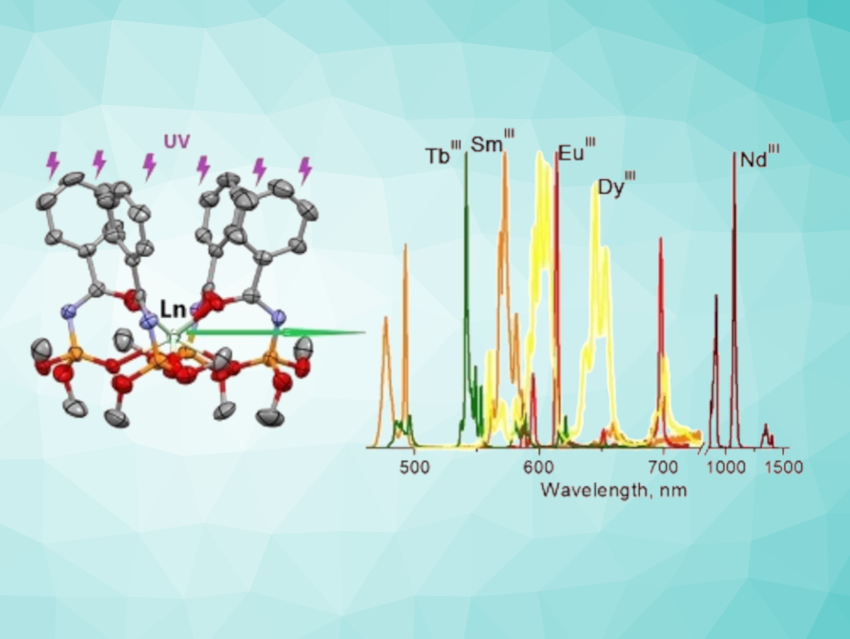Luminescent compounds and materials have a wide range of applications, e.g., in lighting, displays, lasers, or bioimaging. Luminescent lanthanide complexes are interesting research targets due to the particular luminescent properties of Ln3+ ions, such as the high color purity of emitted light and the relatively long luminescence decay times. In addition, ligands can enhance the emission.
Nataliia S. Kariaka, Taras Shevchenko National University of Kyiv, Ukraine, and colleagues have synthesized a series of new lanthanide of the type NEt4[LnL4] (Ln = La, Nd, Sm, Eu, Gd, Tb, Dy) based on dimethyl-N-benzoylamidophosphate (HL). The team synthesized the complexes from the corresponding hexahydrated lanthanide chloride, which was dissolved in isopropanol in presence of triethyl orthoformate as a dehydrating agent. The resulting solution was added to a solution of NaL and NEt4Cl in acetone. The team was able to grow crystals of NEt4[NdL4], NEt4[GdL4], and NEt4[TbL4] suitable for structural investigation with X-ray diffraction.
The team found that the coordination polyhedra of the Ln atoms can be described as square antiprisms with a coordination number of eight. The ligands form a calixarene-like structure in the [LnL4]– complex anions. The phenyl groups of the ligands are directed towards one side, while the methoxy groups are directed towards the opposite side (pictured). The complexes exhibit bright luminescence. The work could be helpful for designing luminescent compounds with desirable characteristics.
- New Luminescent Lanthanide Tetrakis‐Complexes NEt4[LnL4] Based on Dimethyl‐N‐Benzoylamidophosphate,
Nataliia S. Kariaka, Victor A. Trush, Viktoriya V. Dyakonenko, Svitlana V. Shishkina, Sergii S. Smola, Nataliia V. Rusakova, Tetiana Y. Sliva, Paula Gawryszewska, Albano N. Carneiro Neto, Oscar L. Malta, Vladimir M. Amirkhanov,
ChemPhysChem 2022.
https://doi.org/10.1002/cphc.202200129
Also of Interest
- What are Fluorescence and Phosphorescence?,
Kim Dreier,
ChemistryViews 2017.
https://doi.org/10.1002/chemv.201700009




